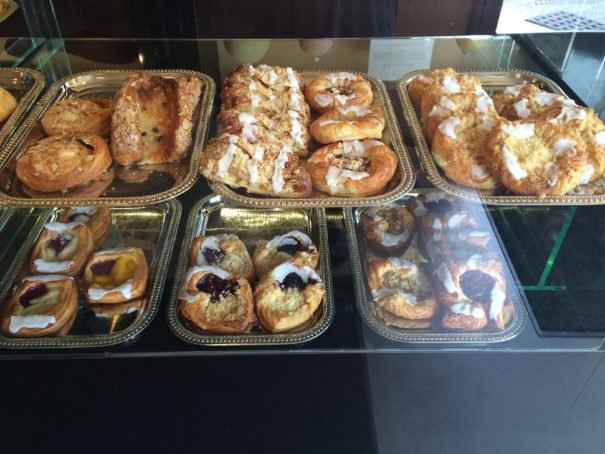
Perhaps It Is Time to Reconsider the Danish

Perhaps It Is Time to Reconsider the Danish
Pastries in Seattle
People around the world obsess about French bakeries: the croissants, the macarons. But in Seattle, a city with a long history of Nordic immigration, Scandinavian bakeries dominate. The Danish is certainly the most well-known Scandinavian baked good, and arguably one of the most popular breakfast items in the world.
The Danish is not only a breakfast pastry; it is a living history lesson fraught with buttery, flaky drama. The pastry known as the Danish did not originate in Denmark. In fact, the pastry’s name in the Danish language is wienerbrød, or Viennese bread, which hints at its origins.
When Danish bakers went on strike in the 1850s, bakers from other parts of Europe were brought in to keep up the work. The Austrian bakers new to town introduced a buttered, layered dough to make pastries filled with fruits, custards and nuts. The strike in Denmark ended, but the smash hit pastry stayed.
The Danish eventually made it to bakery cases around the world, and it has even been caught in the crosshairs of an international political crisis. In 2006, the BBC reported that the Iranian confectioners’ union had renamed the Danish pastry ‘Roses of the Prophet Mohammad’ after cartoons of the Prophet Mohammad were published in a Danish newspaper.
The re-branding campaign by the Iranian confectioners’ union did not stick—not in Seattle, anyway. Here, it is called the Danish, and it is damn good. Byen Bakeri makes a version that is generous in fluff, crispness, and flavor. On a recent morning the case was full of Danish pastry options: cream cheese and almond, cherry, raspberry, blueberry, marionberry, lingonberry, apple, and peach.
My eyes landed on a leaf-shaped cherry Danish that barely fit into the to-go pastry sheath. There is a lot going on in this breakfast—a sweetened and whipped cream-cheese base, a jammy filling with softened cherries, a spray of crumble, a band of icing, and, most importantly, magnificent Danish pastry dough. Any one of these features could go wrong and ruin the whole thing, like an out of tune clarinet in a symphony. But not this Danish. It is in tasty breakfast equilibrium.
A bite reveals the layered magic that makes Danish pastry dough so special thanks to a process called lamination. The baker folds butter into the dough to form thin layers, with a light and flaky outcome.
I had cut the Danish in half to share or save for later, so I busied myself with a cup of coffee for a bit. As I got up to leave table, I started to tuck the pastry into my purse and took one more look. What the hell was I saving the other half for? Some other sunny Seattle morning that was hardly a sure thing in the land of rain? No. I would finish this here and now. I sat back down while morning drivers and cyclists headed downtown to work, finishing my piece of sweet breakfast history.